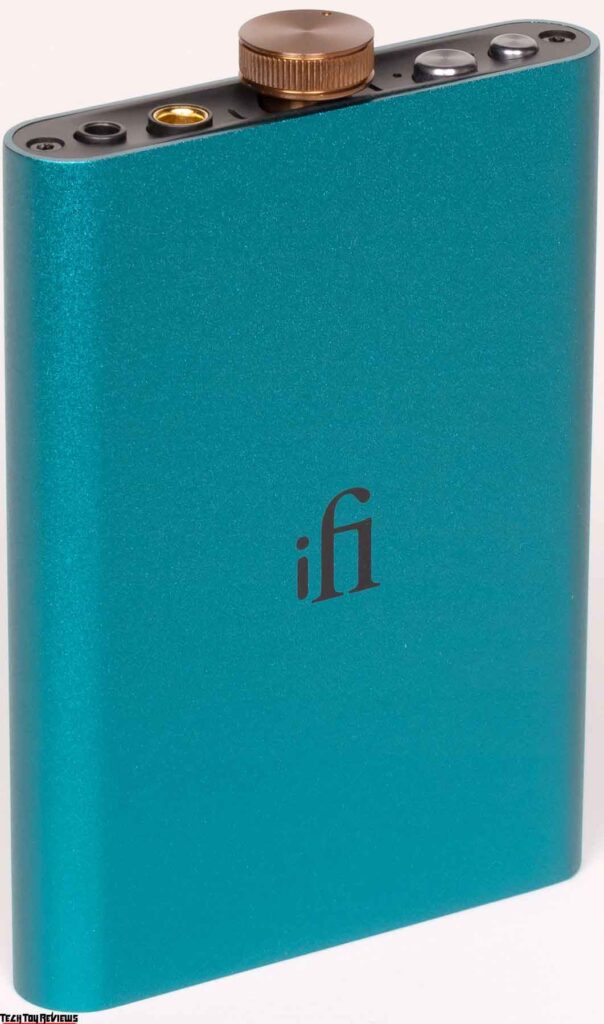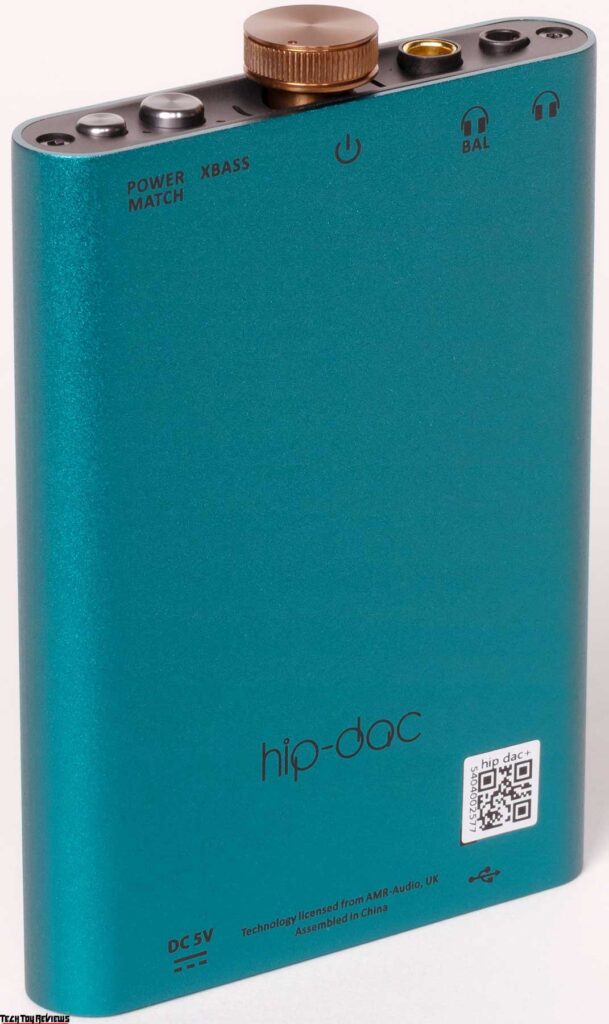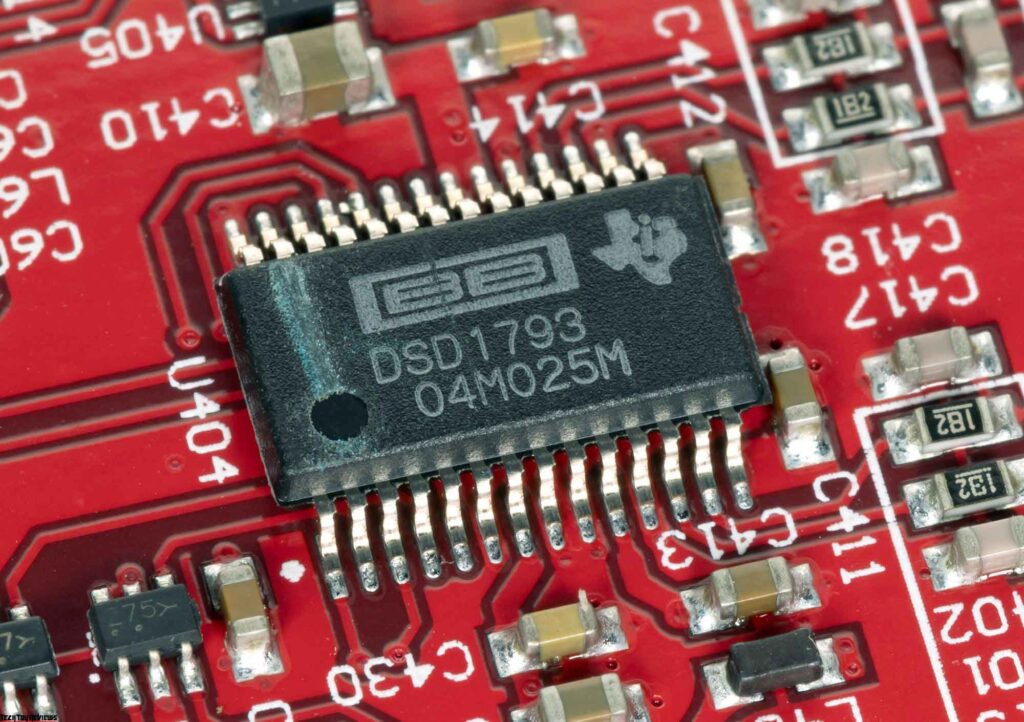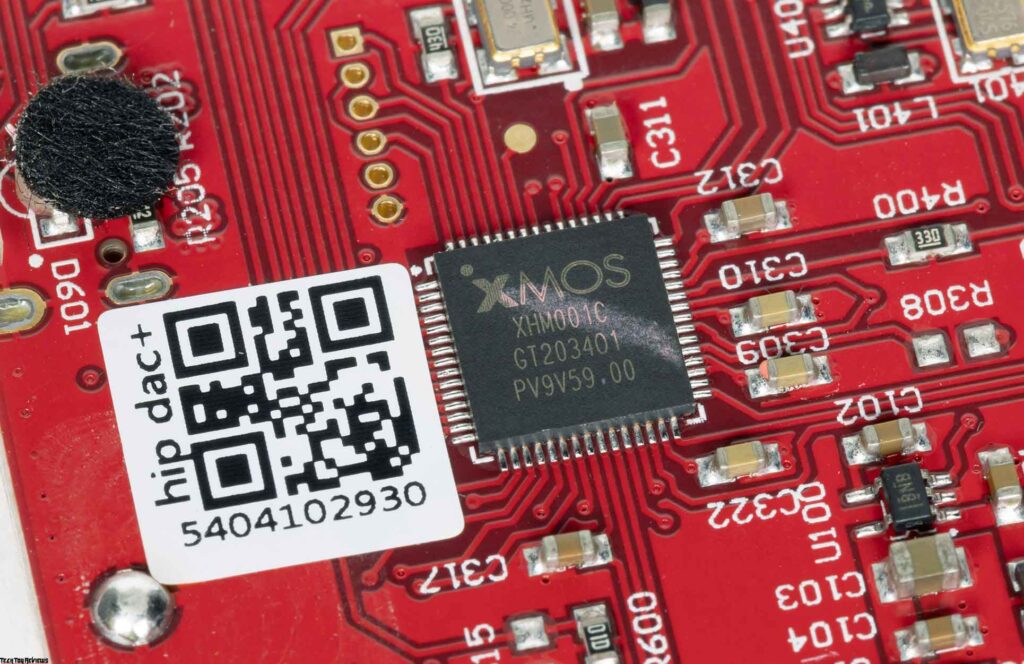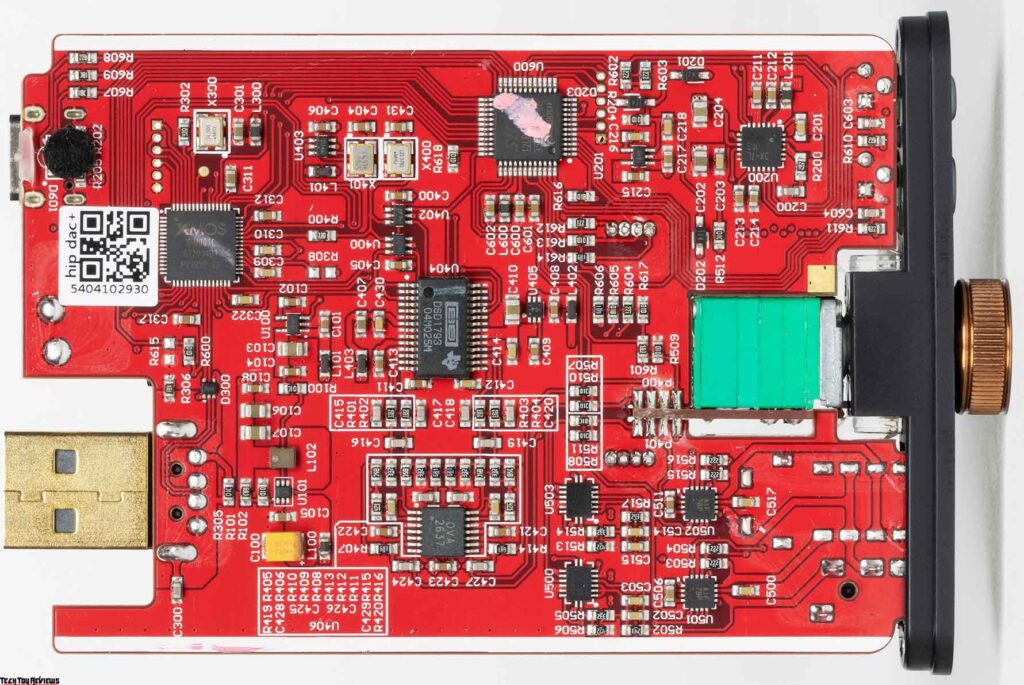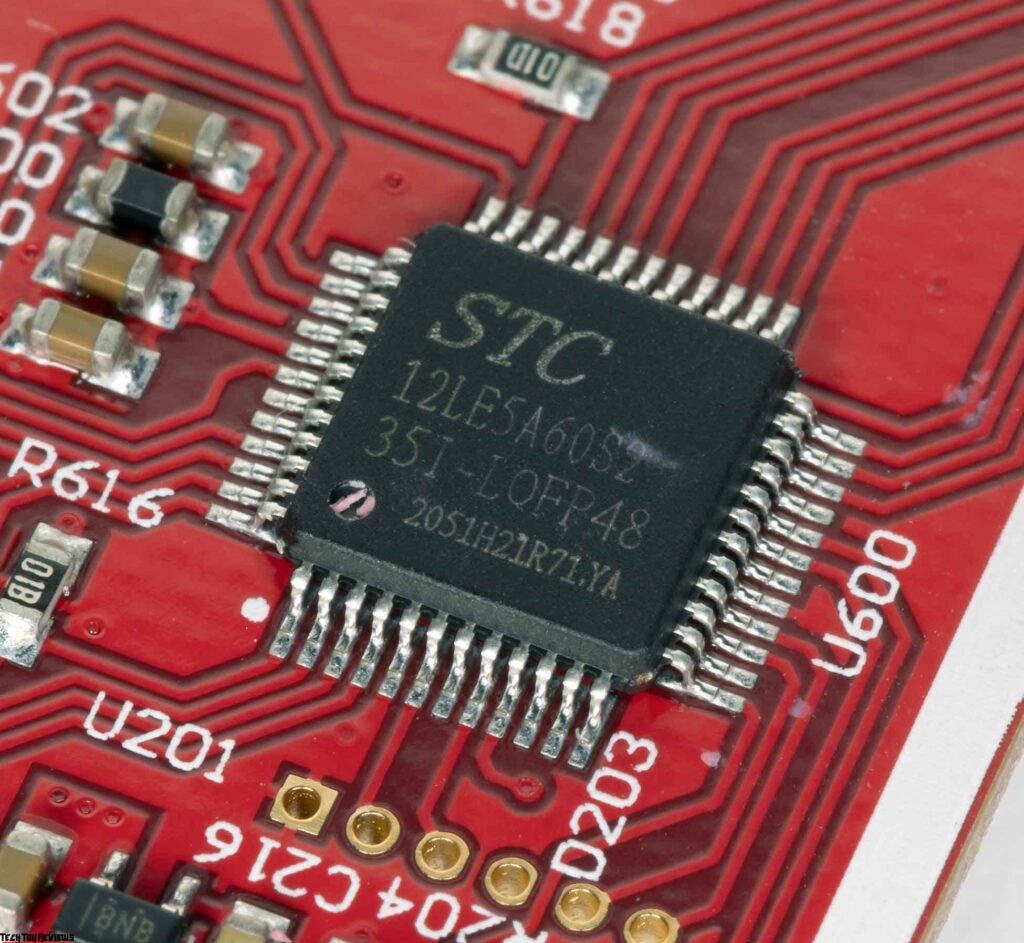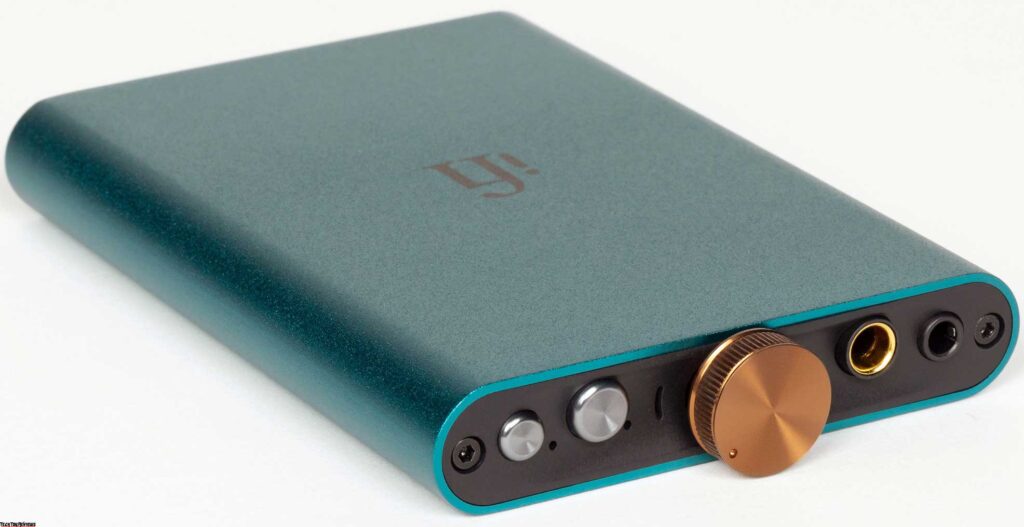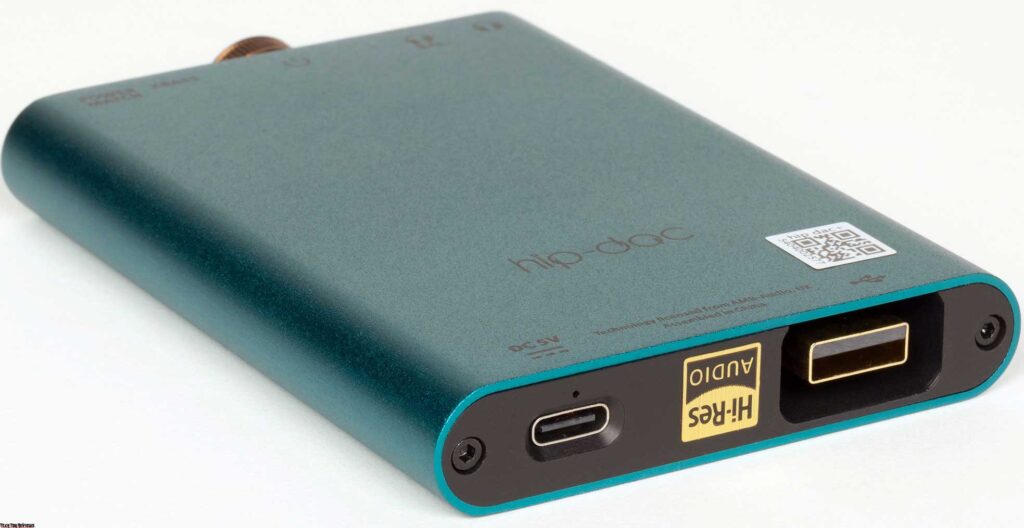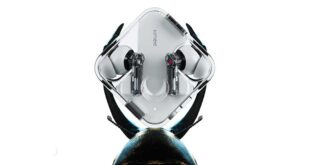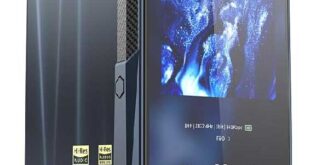We recently talked about a compact, but still stationary DAC / headphones amplifier iFi Zen DAC V2 (REVIEW) from Abbington Music Research (aka AMR). The device turned out to be very interesting, and therefore a natural question immediately arose: is it even possible, but in a portable version and stand-alone? Of course, you can: at the time of writing the iFi Hip dac review, the iFi brand had seven portable devices in its assortment. We decided to start with the most compact as well as the most attractive in terms of design.
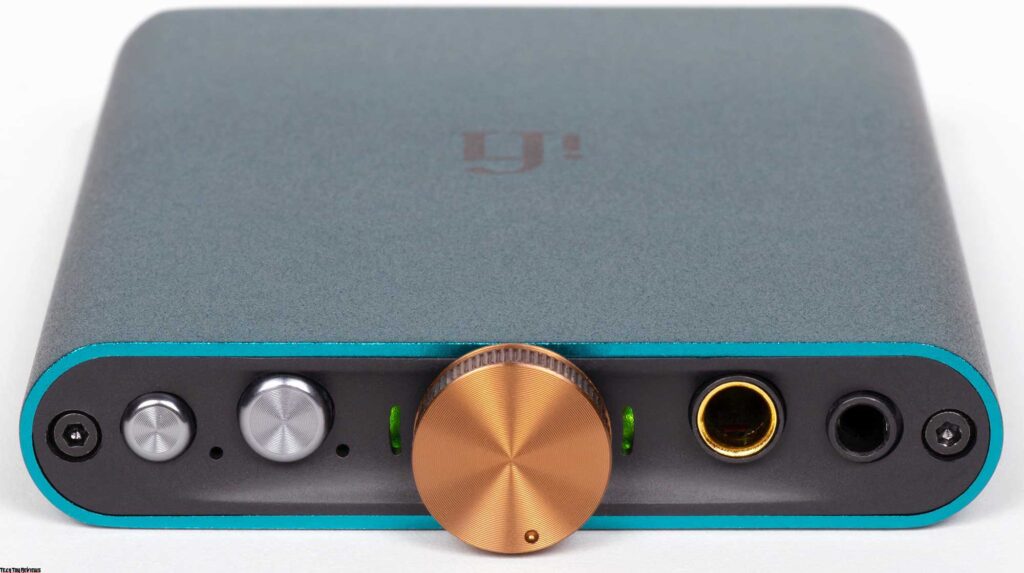
The iFi Hip dac looks impressive, and it can do a lot: it claims support for PCM up to 384 kHz, native DSD64, DSD128, and DSD256, the ability to play MQA – in general, everything you need. Well, the specification corresponds – the much-loved one by the creator of the DAC Burr-Brown, the XMOS microcontroller with custom firmware, and so on. In addition, its battery with a capacity of 2200 mAh, which provides longer battery life. Presumably, everything looks very tempting – let’s see how the device will show itself in action.
Unboxing
The iFi Hip dac is delivered in a simple white box and includes the device itself, documentation, and three cables. USB-A female on one end and Type C or USB-A male on the other for connecting to two audio sources. Plus USB-A – USB Type C for charging.
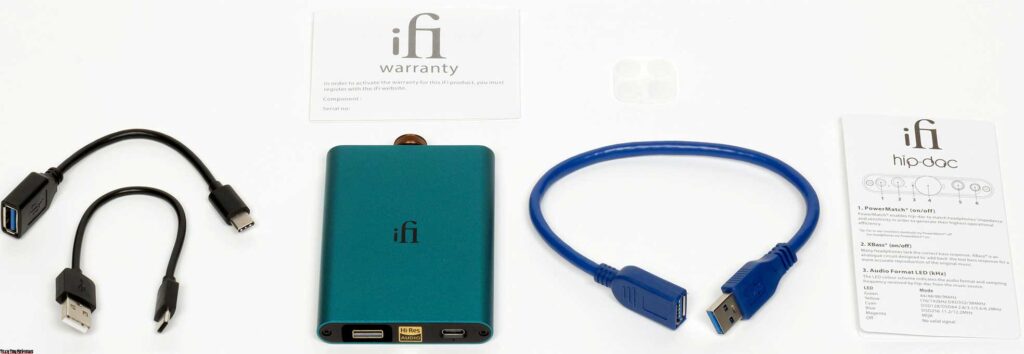
The cable for connecting to the PC is in blue and is the longest among those presented – 30 cm. To reach the system unit of a stationary PC, you may have to find a longer one, but with a laptop, this length is just about right. The cable with USB Type C (on one end) is short – only 15 cm. Given that it is used to connect to mobile devices, it will no longer be needed – it will interfere.
We thought we might have lengthened the charging cable a bit, but here it is the same 15cm. Not always convenient, but generally acceptable. By the way, there are no questions about the quality of the cables – everything seems very solid and reliable. As you can easily see, for PC and Android device owners, the kit has everything you need, but iPhone owners will have to purchase a Lightning cable separately.
Design
The iFi Hip dac’s appearance is so reminiscent of “pocket hip flask” that it is simply impossible not to say about it – we even compared it in the title. So all these associations are clearly not accidental, as it was conceived by the developers of the device.
And the word “hip” is not only meant to function as an adjective—hip, but it can also characterize an item as fashionable and unusual. And the hero of our today’s iFi Hip dac review unit looks really cool: a metal case, matte blue-green paint, an original shape, and some strict but effective decorative elements make its appearance very noticeable, but at the same time tough and sophisticated too.
There’s also the “cover”, the volume control knob, which is made of metal with a pointed side and has a bronze color. The manufacturer’s logo is placed at the center of the front panel.
The rear panel contains the name of the device, the labels of the controls and connectors, as well as a sticker with the serial number. The case isn’t completely smooth, but it has a “grainy” texture, which makes its appearance more interesting, as well as helping to hold the device more securely in the hands.
The edges of the sides are rounded, which makes it easy to carry the gadget in your pocket. Although the iFi Hip dac isn’t the smallest in dimensions, it still fits in the side pockets of jeans, as well as a smartphone. Prominently protrudes, slightly interferes with walking, but still fits. Well, there is a lack of some kind of volume control lock, of course.
There are two connectors on the bottom plane – we will talk about them in the chapter devoted to connecting the device. There we also see another Hi-Res logo.
The aluminum case is monolithic, secured with a pair of screws inside the device, and removable from the top end. The first thing that catches your eye is definitely the massive 2200 mAh battery.
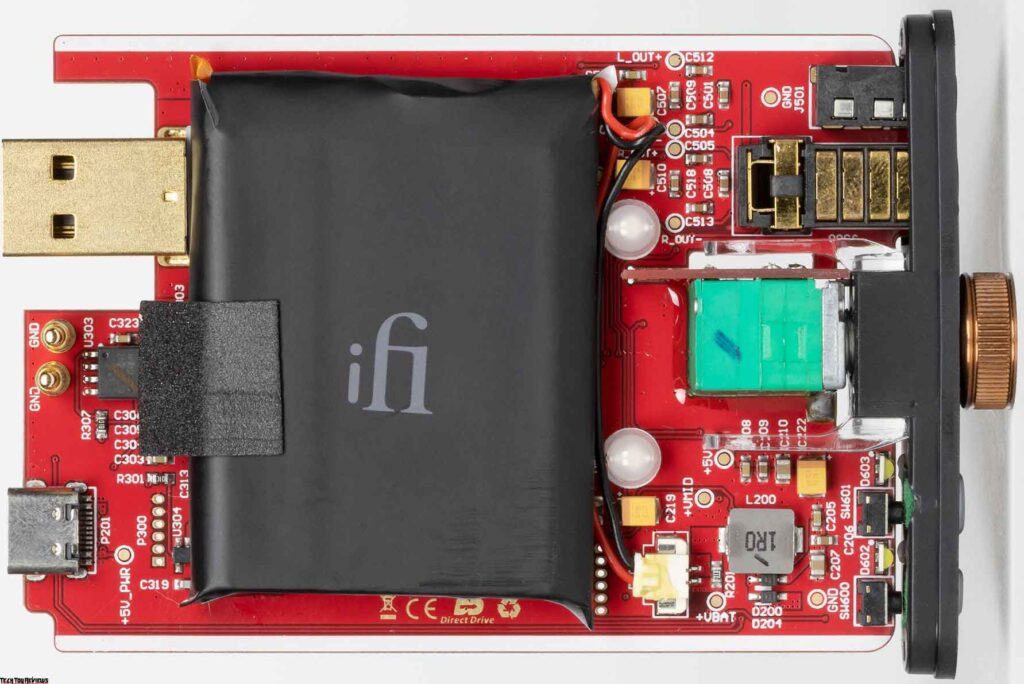
Two LEDs are visible next to the battery, which provides illumination of the volume control, as well as ceramic capacitors TDK C0G Class 1, which the manufacturer mentions in a separate line in marketing materials. It also tells about a power supply with a low noise level on a Texas Instruments microcircuit – you can see it, but unfortunately, it was not possible to read the marking.
The most interesting of all, of course, is located on the other side of the board. By the way, it should be noted that everything is wonderfully assembled. At the bottom is the OV-series operational amplifier (in this case, the OVA2637) that comes with many iFi devices. Above is the STC single-chip microcontroller, the purpose of which we can only speculate – as in the case of the iFi Zen DAC V2.
In the upper left corner, there is an 8-core XMOS microcontroller that processes data coming in from the USB input. According to the developers, it is programmed specially and optimized to work with high-quality sound. Finally, the Burr-Brown DSD1793 DAC is already familiar to us and very beloved by the iFi brand (the company was acquired by Texas Instruments in 2000).
Connection and Operation
Let’s take a look at the back panel of the device again. There are two connectors. Left – USB Type-A male input for connecting to a PC or smartphone. Not the most obvious option, but the manufacturer assures that it will be more correct and more reliable – this has its own logic. Nearby is a USB Type C port for charging, and under it is a small LED indicator that shows the level of fullness of the built-in battery.
The central place on the top panel is occupied by the volume control – a potentiometer that has a limiting rotation angle, which also acts as a power switch. By the way, there is no auto-shutdown – if you forget to turn the knob to the left, the device will slowly consume battery power. And that’s almost the main inconvenience we discovered in our iFi Hip dac review, otherwise, we were pretty happy with the comfort of a conversation with it.
On the left side of the regulator are two buttons, each with an indicator. The smaller one turns on the Power Match function, which increases the gain of the outputs when activated. It allows you to use both low-impedance in-ear headphones and “tight” full-size models, without encountering background noise and other problems. The big button is responsible for the XBass option, which allows you to have an audible emphasis on the low-frequency range. Well, to the right of the regulator, we see two headphone outputs: a regular 3.5 mm minijack and a 4.4 mm balanced Pentaconn.
On either side of the rotary volume control is a pair of transparent elements, behind which are multicolored LEDs – we saw them just above.
They are present there not only for beauty: depending on the audio format being played, they change color:
- Green – PCM 44/48/88/96 kHz
- Yellow – PCM 176/192 kHz, DXD352 / 384 kHz
- Blue – DSD128 / 64
- Blue – DSD256
- Magenta – MQA
Connecting the device is simple and easy: one end of the cable to the source, the other to the connector on the rear panel. Recently, there were some nuances in setting up an external DAC for Android for perfect work with gadgets, but times are changing – with the iFi Hip dac everything is as easy as possible. Immediately upon connecting, the application of the main source of MQA streams, the Tidal Streaming Service, issues a request to use the device. We just agree – everything works at once, the headphones amplifier cheerfully reports on the reproduction of the MQA format using the purple glow of the indicator.
The same happens with USB Audio Player PRO, which we used to play files in DSD format. In it, you have to select the correct DSD output option and activate Bit Perfect mode – we will not dwell on this in detail, the users of the application are already in the know, and the setup instructions are easy to find. When connected to a Windows 10 PC, the DAC is easily recognized by the system and is ready to go almost immediately.
In the Tidal application, you need to activate the exclusive access mode, and, if you want, fix the volume level – it is more convenient because on a “digital amplifier” its regulator is analog and is not able to influence the source settings. iFi Hip dac can only act as an MQA renderer – decoding is done by the connected PC.
Battery
The built-in battery has a capacity of 2200 mAh, according to the manufacturer, depending on the connected headphones and the files being played, this may be enough for 8-12 hours of operation. It is quite difficult to get full-fledged statistics here – you will have to connect a dozen or two headphones to the device, and then completely discharge the battery. We decided to take just one series of measurements—as a reference, using the method we typically use when testing wireless headsets. As an example, we took full-size headphones with an impedance of 38 ohms.
Well, then – everything is as usual. A safe sound pressure level when listening to music with headphones is 75 dB, but in practice, most listeners prefer 90-100 dB. We broadcast white noise into the headphones, fixing the SPL level in the region of 95 dB, immediately after playback begins, we start recording the signal from the measuring stand – by the length of the resulting track, it is easy to understand how long we can count on for battery.
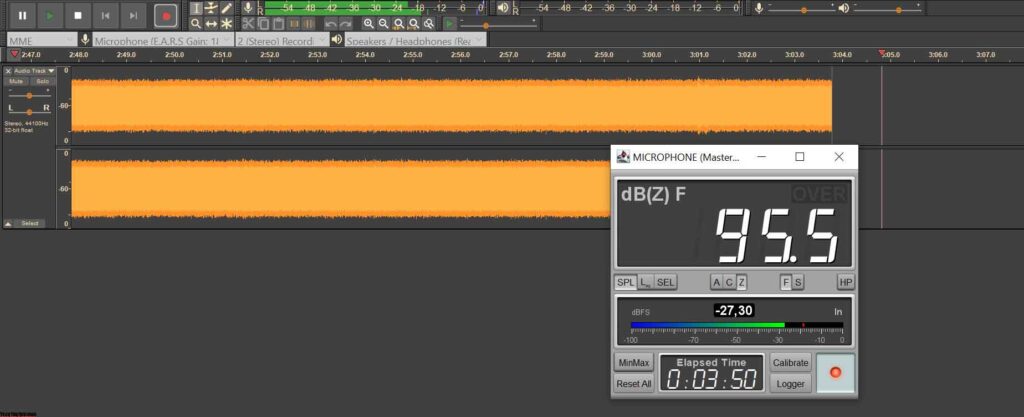
In this mode, the device worked twice for about 9.5 hours – a very acceptable result, it is quite enough for a day’s use. A full charge takes about 3 hours. It is important to note that you can charge and use the device in parallel – you just need to connect both the sound and power sources at the same time. The charge level can be monitored by the indicator located at the bottom of the USB Type C connector:
- White:> 75%
- Green:> 25%
- Red:> 10%
- Red and flashing: ≤ 10%
The instructions say nothing about compatibility with headphones, but we tried connecting both low-impedance in-channel and full-size models with an impedance of up to 250 ohms – everything works great during iFi Hip dac review, in the second case, it would be very useful, of course, to enable the Power Match function. Well, before moving on to sound and measurement, let’s look at the possibility of installing various firmware, which allows not only to update the functions of the device but also to experiment with digital filters if desired.
Measurements and sound
The iFi Hip DAC sounds fairly balanced without bright colors or distortion – in fact, we didn’t expect anything more from this and other high-end devices. A sound character has traditionally been more dependent on the connected headphones than on the direct DAC/amplifier. Speaking about measurements, we cannot fail to notice once again that they are presented solely as illustrations – it is definitely not worth making unambiguous conclusions about the quality of the device based on them.

For example, the difference between “very good” and “excellent” ratings is often a fraction of a percentage – it is unrealistic to hold it by ear. Measurements and graphs can help us see really serious problems: too much distortion, noticeable uneven frequency response, and so on. If no obvious violations are observed during the iFi Hip dac review, then you should not attach too much importance to the “numbers” – it is better to take the opportunity to listen and find the device, so it will be more reliable and informative. In this case, the measurements in RMAA turned out to be very acceptable, the iFi Hip dac definitely deserves attention.
Well, in the end, let’s take a look at the XBass option – when listening to several genres, many users will want to press this button and get an emphasis on the low-frequency range. The function works perfectly, the bass is thoroughly forced, which can be seen from the frequency response graphs.
Final line
What we really liked about the iFi Hip dac was its versatility: you want to take it with your smartphone, you want to put it on the table and connect it to your PC. At the same time, you can hear MQA and all kinds of hi-res, not to mention other formats. Sounds pretty solid, compatible with almost any headphones.
Well, the appearance, of course, is simply wonderful – it cannot be taken away. Again, the cost is not too high by the standards of the class of devices in question, the conversion of money into the comfort of use and sound quality is at a very favorable rate.
Price and availability
iFi Hip dac headphones amplifier has been priced at $169 on Amazon.com, and £149 via Amazon.co.uk. How did you like this iFi Hip dac review, let us know in the comment section below.
 Technology News, Reviews and Buying Guides review, monitor review, tablet review, laptop review, mobile review, smartphone review, buying guide,
Technology News, Reviews and Buying Guides review, monitor review, tablet review, laptop review, mobile review, smartphone review, buying guide,
